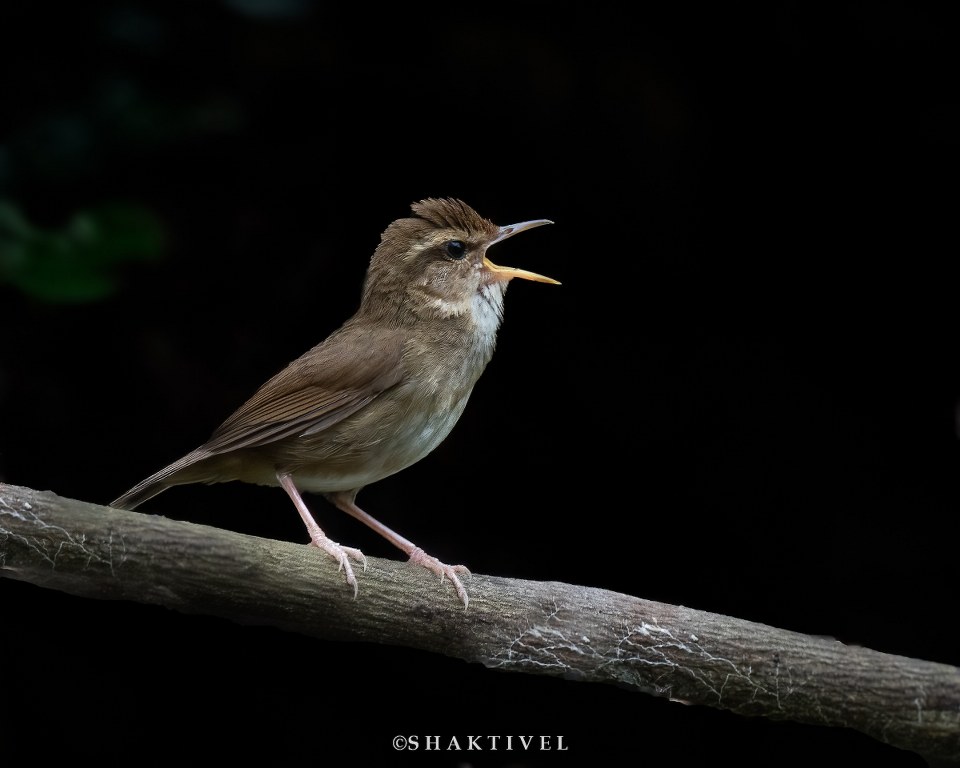“Despite my regular exploration of various habitats in the islands, I had never been able to see or hear this rare bird as several visiting birders claimed to have” – Says Shakti Vel, an avid birder and naturalist from the Andaman and Nicobar Islands. He further adds- “Finding a rare bird can sometimes feel like looking for a needle in a haystack, but you have a better chance of finding the needle if you look in the haystack every day”.
Read on to learn more about Shakti Vel’s quest to find a rare subspecies of warbler—a subspecies exclusive to the Andaman islands—and his being the first photographic record!
When I started birding back in 2013, I blatantly ignored the existence of warblers because they are tough to spot and they all look alike. They’re tiny and fast, and they tend to stay up in tree canopies or within dense reeds or bushes, making them difficult to even glimpse. But as I continued to explore the Andaman Islands, I couldn’t help but be drawn to them, mainly because by then I was familiar with most other species recorded from the islands. Since then, with a little practice and a lot of patience, I have learned to identify many of the warbler species found here, from the dull-looking Dusky Warbler to the rarely recorded Sakhalin Leaf Warbler. All warblers found on the islands are migratory, but the only resident species—and perhaps the most enigmatic—is the ‘Andaman’ Pale-footed Bush Warbler.

Landscape Shot of the Andaman Sea. © Shakti Vel
Pale-footed Bush Warbler is a mid-sized warbler with brown upperparts and a dark eyestripe, contrasting with its white throat and whitish-buff supercilium. Its flanks, breast, and undertail coverts are buff-brown, while the eponymous legs are a very pale pink. A new subspecies endemic to the Andaman Islands was described in 1908, and was named osmastoni after BB Osmaston who found it breeding in Port Blair and also collected the type specimen on 11 December 1906. The only other specimen available in the Global Biodiversity Information Framework (GBIF) is from Mount Harriet, taken on 26 June 1897 by AL Butler. There was also apparently a third instance when it was collected, in October, as per Birds of South Asia. This information from collected specimens suggests that this bird is a resident.
However, despite my regular exploration of various habitats, I had never been able to see or hear a Pale-footed Bush Warbler. As several visiting birders continued to report the species on eBird—often without any supporting evidence and occasionally with photos of a mistaken Dusky Warbler—I began to question whether this species was actually present on the islands anymore.

In December 2020, during the lockdown, I spent time birding near my home in Rangat, a town in the Middle Andamans. It was during one of these outings that I heard an unfamiliar song emanating from dense vegetation nearby. Without delay, I grabbed my phone and played a recording of the Pale-footed Bush Warbler song that I had downloaded from xeno-canto.org. To my delight, the two songs matched perfectly! It’s difficult to put into words the joy that a birder experiences when they finally come across the bird they have been waiting years for.
However, a sighting is not complete until the bird is actually seen. The undergrowth was thick and riddled with twigs and branches, and I couldn’t locate the singing warbler. I recorded the song for the eBird reviewer, a person with whom rests the eBird fate of your sighting. The bird eventually stopped singing, so I had to leave and try my luck some other time. A few days later, I was birding near the local dumpyard when I heard the same song coming from a distance. After another unsuccessful attempt to locate the bird, I recorded the song once more.

One of the site where Pale-footed Bush Warbler was recorded. © Shakti Vel
It wasn’t until the following week, when birding near the same dumpyard with fellow local birder, Mr. Sekhar Dunna, that I caught a glimpse of the warbler in the undergrowth. But poor views left us unsatisfied until after about three hours of struggle when we finally managed to see it well. We obtained numerous call recordings and photographs that day, becoming the first to photograph the Andaman subspecies of Pale-footed Bush Warbler (Urosphena pallidipes osmastoni).
Fast-forward two and a half years to when I was leading a nine-day birding tour in Andaman for Mr. Jonathan Slifkin. He mentioned having recently seen the Pale-footed Bush Warbler in Assam, but reading that the Andaman race had not been sighted in the recent past, I managed to pique his curiosity with descriptions of my past sightings. We then drove for nine hours to reach Rangat in search of this one species. The dumpyard surroundings had been cleared of all vegetation, so our only hope was to search the area where I had first heard the bird sing.
On a gloomy morning in May, accompanied by a gentle drizzle, our chances of success seemed slim. Nonetheless, we stepped out of the car and ventured along the forest road. About five minutes into our birding, we heard the enigmatic song and, to our pleasant surprise, found a Pale-footed Bush Warbler perched out in the open, just beside the road! Frustrated by my oversight of leaving the camera in the vehicle, I hurriedly dashed back while Jonathan seized the opportunity to photograph the bird. Thankfully, the warbler remained in place upon my return, allowing both of us to capture numerous images and videos. Satisfied with our documentation, we decided to leave the bird undisturbed. To our astonishment, over the next couple of days, we encountered the species in four different locations and managed to photograph two distinct individuals, surpassing our initial expectations.
Finding a rare bird is difficult, and there is no surefire method. In my search for the rare bird, I learned that visuals alone weren’t sufficient. By knowing its distinct song, I had an advantage. This helped me find the bird multiple times. Looking for a rare bird is like finding a needle in a haystack, but searching consistently improves your chances. This experience taught me that persistence and knowledge can overcome tough challenges and reveal something extraordinary in everyday moments.
Note: All photos used in this article are the copyright of the author, Shakti Vel.
About Shakti Vel
After earning his post-graduate degree in marine biology, Shakti worked for five years as a marine biologist, conducting underwater surveys to study coral reef biodiversity by scuba diving in remote islands like Andaman, Nicobar, and Lakshadweep. Currently, he operates a birding tour company called Tribesmen, focusing on the Andaman and Nicobar islands. Considering himself a blend of birder and bird photographer, he spends numerous hours outdoors, studying birds and observing their behaviour.
Header Image: Pale-footed Bush Warbler Urosphena pallidipes © Shakti Vel/ Macaulay Library





Wonderful record. Congrats Mr Shakti Vel. Its population status needs to be assessed on the Islands. Hope this ‘rediscovery’ is being formally published.
Insightful and could travel through his words of experience.
Wonderful read Shakti. I must also come with you to Rangat one day !
Congrats Shakti Vel, Yes, visiting the same place again and again surely helps one to finally get your target species.. Wonderful write up!
Lovely documentation, Happy for you dear Island birder
thank you for great info